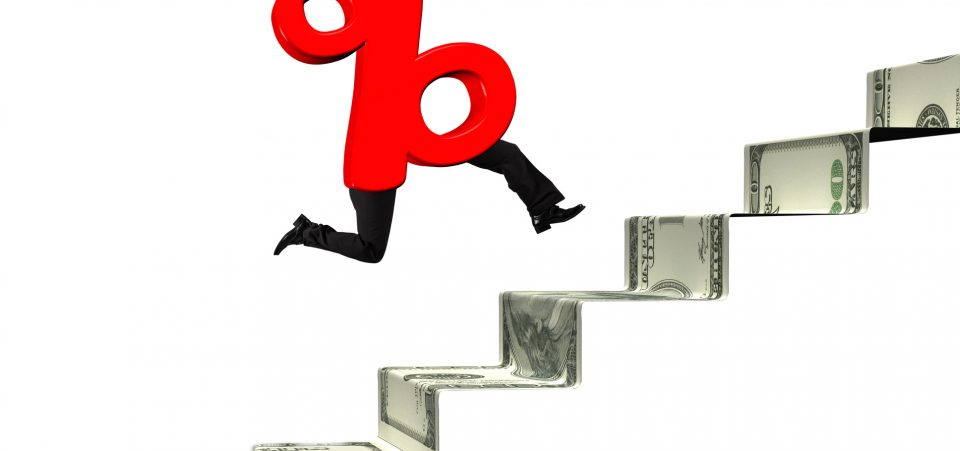Last Wednesday, for only the third time since the credit crisis of 2008, the Federal Reserve raised interest rates.
The Federal Funds Rate—the interest rate at which the Fed lends money to banks—is now between 0.75% and one percent, which sounds like peanuts still. Those who save their money still can’t get a good return by depositing their funds in banks or by buying CDs, so the stock market will continue to do well under the most recent Fed rate hike. But, in the next 12 to 24 months, as I will explain below, we will see a whole different story.
Rising Interest Rates: What Will the Effects Be?
With the “official” inflation rate running at two percent (we all know it’s much higher) and 10-year U.S. treasuries paying around 2.5%, savers and retirees are still doomed, despite rising interest rates. The Fed says it will raise its interest rates two more times this year (both increases estimated to be one-quarter point), thus bringing the Fed’s benchmark interest rate to between 1.25% and 1.5%. This still won’t help savers much either.
On the other side of the equation, rising interest rates will be a catastrophe for consumers and the overall U.S. economy.
Consumers will see the interest they pay on credit cards jump 0.75%. Mortgage rates, which have risen by half a percentage point over the past year, will jump another 50 basis points. Mortgage rates will have gone up a full percentage point in less than two years. This makes homes less affordable and is obviously very negative for the housing market.
My Take on the Fed’s Rate Strategy
With the official U.S. unemployment rate at 4.5% and most American companies having fully recovered since the 2008 credit crisis, rising interest rates are warranted. The problem is that higher rates were needed a long time ago, with gradual increases, not several increases jammed into one year.
Economists like me were urging the Fed to start raising rates four years ago. A one-quarter percent increase per year for four years would have had rates up by a full 100 basis points today. And that would have been palatable for the economy. But stuffing four rate increases down the throat of a fragile economy over a 12-month period is extremely risky.
But that’s how the Fed works; it’s either feast or famine. I remember very clearly the last time the Fed ran rates up too fast. In June 2014, the Federal Funds Rate was one percent; by June of 2016, it was five percent! The Fed pushed up rates by 400% in less than two years. And what happened? The housing market started crashing in 2006, the stock market started crashing at the end of 2007, and we had a full-blown economic crash in 2008.
The Great Crash of 2018–2019
If the Fed goes ahead with what Fed Chair Janet Yellen said this past Wednesday and increases rates two more times in 2017 (which I’m sure the Fed will do), the rates will have gone up 400% since December 2015.
Now, some might say that going to interest rates of 1.25%–1.5% from 0.25%–0.5% isn’t a big deal, but I beg to differ. Our economy is fragile. Our national debt stands at $20.0 trillion, the stock market is at unheard-of high valuations, and corporations have borrowed billions of dollars to buy back their own stocks. How can a planned 400% increase in interest rates not crash the economy?






